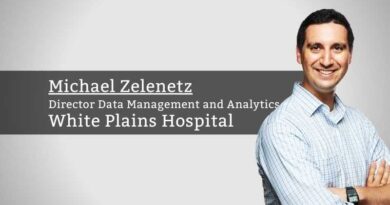Leveraging AI in Revenue Cycle Management for Healthcare
By Jennifer Wheeler, VP of Revenue Cycle, Stone Diagnostics
The integration of Artificial Intelligence (AI), automation, and data analytics into the revenue cycle management (RCM) of healthcare facilities marks a transformative leap toward operational excellence. In an era where financial sustainability is as crucial as clinical outcomes, these technologies are pivotal in optimizing processes from patient intake to final billing, ensuring that healthcare providers not only survive but thrive in a competitive market.
At our infectious disease lab, the implementation of AI and data analytics has revolutionized how we manage our revenue cycle. By automating routine tasks, we have freed up valuable time for our staff to focus on more complex, value-added activities. Automation of data entry and claims processing reduces the likelihood of errors and speeds up the turnaround time, directly impacting our cash flow and reducing the days in accounts receivable.
One of the most significant advantages of using AI is its ability to analyze vast amounts of data to identify trends and patterns that would be impossible for a human to discern. This capability allows us to anticipate issues before they become problematic, such as identifying which claims are likely to be denied based on historical data. With predictive analytics, we are proactive rather than reactive, which not only increases our revenue but also reduces the stress on our staff and improves our relationships with patients and insurers.
AI transforms data into actionable insights, enhancing efficiency and profitability in healthcare.
Moreover, machine learning (ML) models within our AI systems continuously learn from new data. As they become more sophisticated, they offer increasingly accurate forecasts and deeper insights into our lab’s financial operations. This ongoing learning process is crucial for adapting to the ever-changing landscape of healthcare regulations and insurance policies.
Our organization has also capitalized on data analytics to fine-tune our pricing strategies and to ensure compliance with billing regulations. By analyzing the outcomes of thousands of past transactions, we can set competitive prices that maximize our revenue without compromising patient care. Furthermore, compliance monitoring through AI-driven systems ensures we adhere to all billing regulations, reducing the risk of costly penalties and legal issues.
The integration of these technologies extends beyond internal operations to enhance patient interactions. Our patient portal, powered by AI, offers personalized experiences where patients can easily access their billing information, understand their payment options, and communicate with billing representatives seamlessly. This not only improves patient satisfaction but also expedites payments, positively affecting our cash flow.
In addition to these operational improvements, AI and data analytics significantly enhance our strategic decision-making capabilities. With access to real-time data and advanced analytical tools, our management team can make informed decisions quickly, addressing potential financial discrepancies and optimizing overall financial health.
Furthermore, the ability of AI to integrate with other technological advancements, such as electronic health records (EHRs), further streamlines our operations. This integration ensures that all patient data is synchronized across platforms, minimizing the risk of data silos, and ensuring that every department has access to the same accurate and updated information. This seamless integration helps in maintaining consistency in billing practices and patient care services.
Our commitment to leveraging AI extends to training our staff to effectively utilize these tools. By holding regular training sessions and workshops, we ensure that our team is not only comfortable but also proficient in using the latest technologies. This empowerment enables them to contribute actively to our ongoing efforts to refine and improve our revenue cycle processes.
Additionally, AI tools help us manage the complexities of insurance verification and eligibility checks with greater accuracy. By automating these processes, we reduce the instances of claim rejections due to coverage errors. This not only speeds up the billing process but also decreases the burden on our patients, who can be confident that their coverage is correctly verified at the outset of their healthcare journey.
Moreover, AI-driven analytics assist us in identifying inefficiencies in our billing and service delivery models, allowing us to make necessary adjustments. These adjustments are often predictive rather than reactive, positioning us to address potential issues before impacting our operations. This foresight saves time and resources and supports our strategic goals of maintaining financial health and patient satisfaction.
The adoption and continual advancement of these technologies in our revenue cycle processes illustrate a commitment to innovation and excellence in healthcare management. As these tools evolve, so too does our ability to meet the needs of the patients we serve and the staff we support, ensuring a future where healthcare and technology work hand in hand for the betterment of all involved. As we continue to harness these powerful technologies, we not only foresee a more robust financial footing for our lab but also a greater capacity to provide exceptional care to our patients.
Through ongoing investments in AI and data analytics, we not only optimize our current operations but also pave the way for future innovations. These technologies allow us to stay at the forefront of the healthcare industry, continually improving our services and outcomes. By embracing AI and automation, we not only enhance our operational efficiencies but also ensure a higher standard of care, which is the cornerstone of our mission in healthcare.



